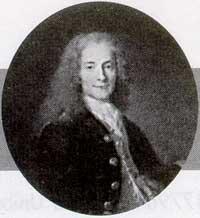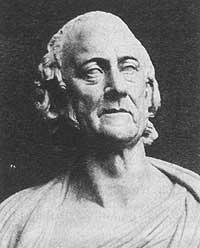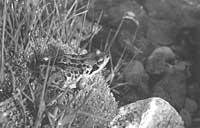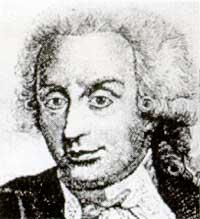Volta, Alessandro
1995/08/02 Azkune Mendia, Iñaki - Elhuyar Fundazioa | Kaltzada, Pili - Elhuyar Zientziaren Komunikazioa
(1745-1827)
This Italian physicist was born in the kingdom of Lombardy, in Como. February 18, 1745. As a child he did not learn to speak until four years, so his family members were concerned about his mental delay. When he was seven, however, he had reached the level of his friends and, from then on, he learned the topics faster than others.
In 1774 he was appointed Professor of Physics at the Superior School of Com. He was concerned about the phenomenon of electricity that was fashionable at that time, due to the interest aroused by Priestley's new theories. The following year he invented the electroforum (apparatus generating static electricity) and described it in a letter to Priestley.

The electroforum was formed by a disc covered with ebonita and another metal disc with electrically isolated handles. Rub the disc of ebonita and negative electric charge. If a metal disc is placed on it, both horizontal and parallel, on the lower side of the metal disc a positive electric charge appears and on the upper negative. The negative load on the ground can be dragged and the repetition of the cycle allows us to have a lot of load on the isolated handle disc. The electroforum is basically an electrical load accumulation device with the same base as the current capacitors. He forced to discard the bottle of Leyden.
In 1778 he studied the composition and nature of the gas of the reservoirs (methane). Consequently, it invented the eudiometer used for volumetric analysis of gas mixtures.
In 1779 he was chair of physics at the University of Paris. There he also invented other appliances in static electricity.
In 1791, the "Royal Society" awarded him the Copley medal for his works and later he was appointed a member of it.
Subsequently he was in charge of the tests carried out by Galvani. If, when touching the muscle, two metal pieces appeared, the origin could be in the muscle or in the metal part. To prove this, in 1794 he achieved an electrical current using only metals without muscle. Therefore, the electric current had nothing to do with the muscles or living tissues. As a result of this discovery, Volta and Galvani discuss. Then two groups were formed, the German Humboldt in favor of Galvani and the French Coulomb in favor of Volta.
In 1800 he invented an apparatus capable of generating electric current. He used containers with saline solution. The metal arches placed one tip in a container and the other in the other. One of the ends of the arch was copper and the other was tin. It was the first battery in history.
Volta abandoned the size and discomfort of packaging in dissolution, using small copper and zinc discs and carbon discs impregnated in an intermediate saline solution. Copper, zinc, coal, copper, zinc, coal, etc. his discs overlap. Connecting with a wire the bottom of the first disc and the top of the last one, the electric current passed. Therefore, the stack of Volta was invented. As the discs were placed next to each other to perform a job, it was also called electric battery.
Invented the electric battery, Volta's fame spread all over the world. He was also called by Emperor Napoleon in 1801 to teach him his inventions and gadgets in Paris. The emperor appointed him count and senator of the kingdom of Lombardy. In 1815 the Austrian emperor appointed him director of the Faculty of Philosophy of the University of Padua.
At present, however, Volta's greatest honor is to name the unit of electromotive force with the word volt. It is about measuring the electronic energy currently used in particle accelerators with the unit called Alessandro Volta, Italian physicist. Alessandro died in his hometown, Comón, on March 5, 1827.

Gai honi buruzko eduki gehiago
Elhuyarrek garatutako teknologia






